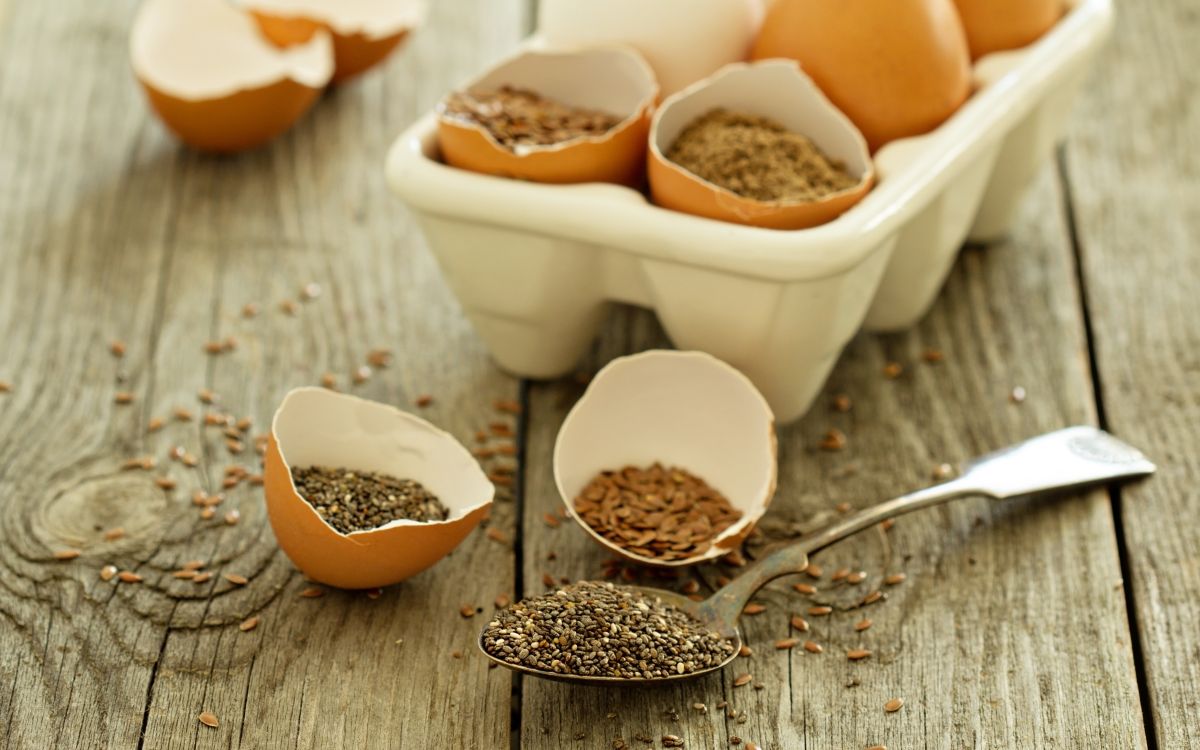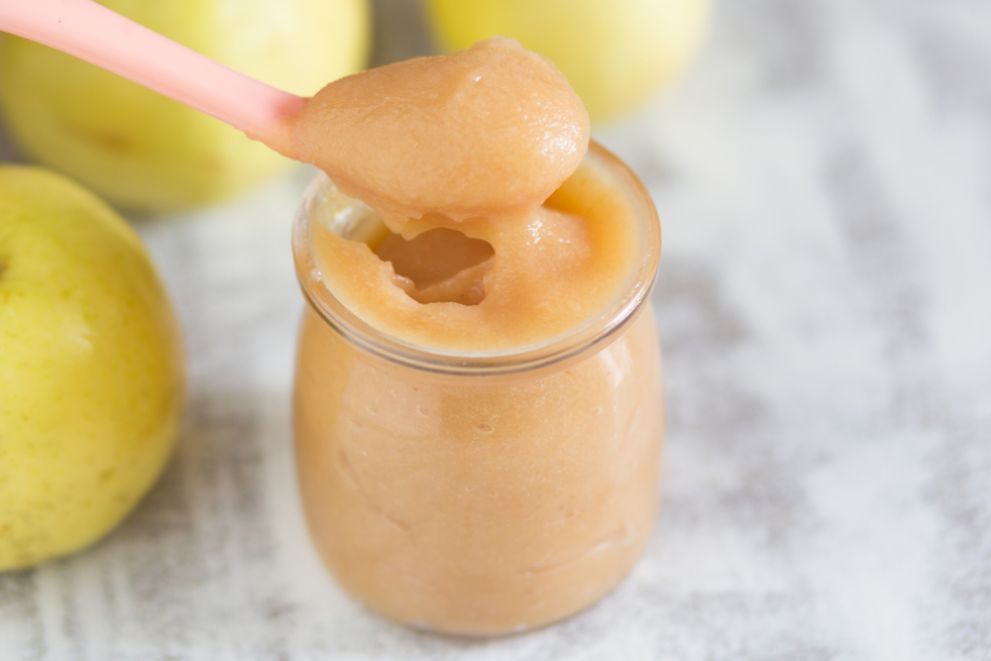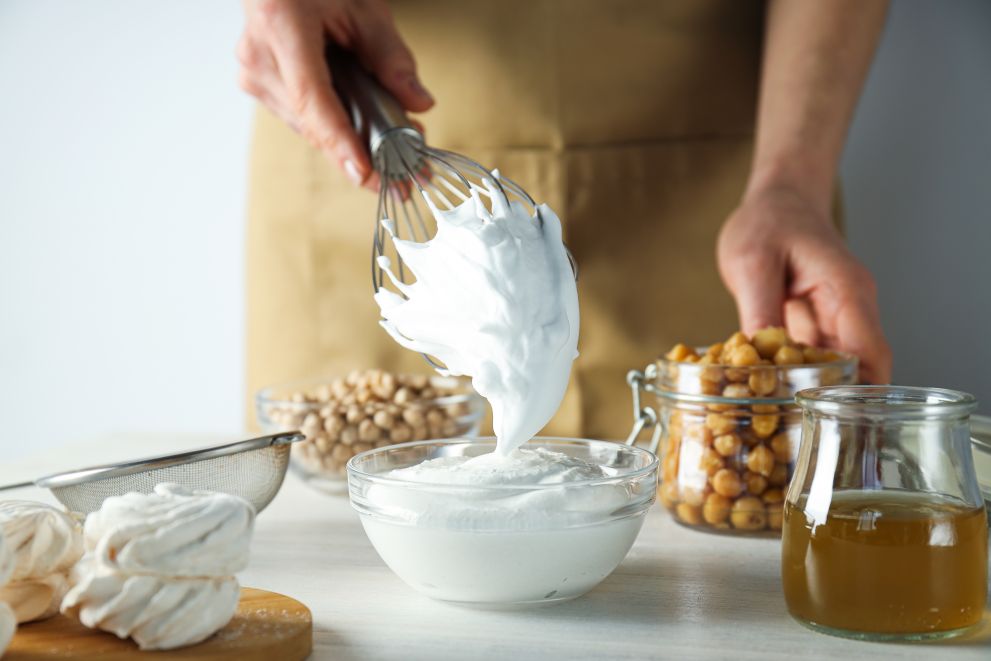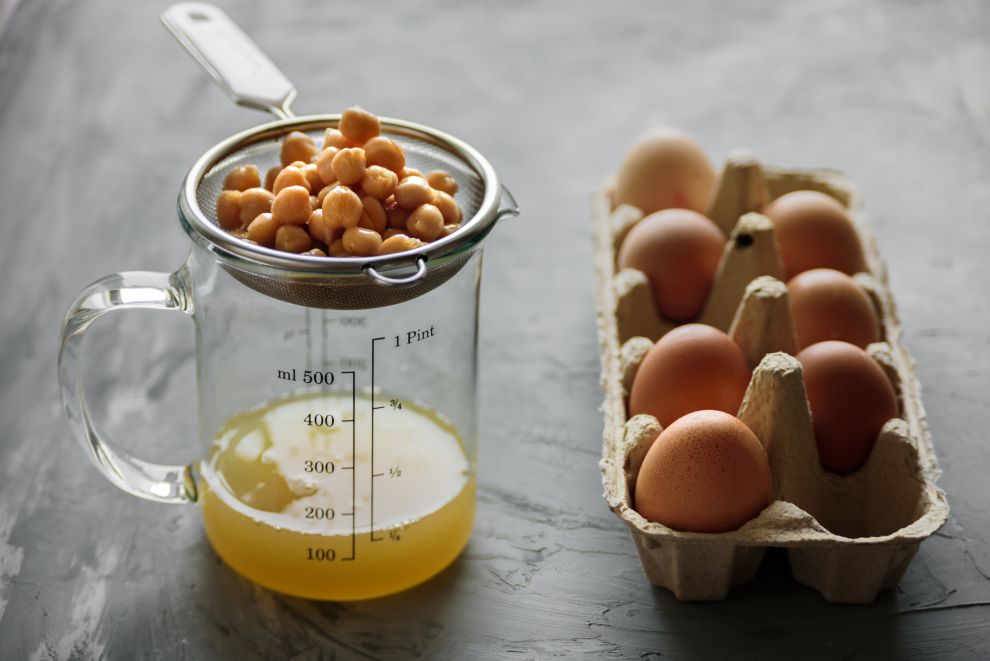Egg substitutes in cooking and baking

Eggs: an egg-cellent all-rounder in the kitchen! This versatile and healthy ingredient can be used to make a wide variety of dishes, making them a popular food for many. For many eating eggs simply isn’t an option. Fortunately, there are plenty of replacements you can use instead. Our Chef, Ivana has put together a comprehensive list of pros and cons for these substitutes.
Eggs are especially common in baking, where nearly every recipe calls for them. But for various reasons, such as an egg allergy or a vegan diet, alternatives are sometimes needed. Fortunately, there are plenty of them.
Substituting eggs according to their function
Before discussing the many ways, you can substitute eggs, it is important to understand why eggs are used so frequently in recipes. Eggs serve several purposes in baking. They contribute to the structure, colour, flavour, and consistency of baked goods in the following ways:
- Binding: Eggs help combine ingredients and hold them together.
- Leavening: Eggs trap air pockets in foods, causing them to expand during heating. This helps foods puff up or rise.
- Moisture: The egg liquid is absorbed into the other ingredients in a recipe.
- Flavour & appearance: Eggs help carry the flavours of other ingredients and brown when exposed to heat.
This means some egg alternatives are better for heavy, dense products, while others are great for light and fluffy baked goods. You may need to experiment with various egg alternatives to get the texture and flavour you desire in your recipes. If the recipe lacks liquid ingredients, eggs are likely intended to add moisture. Recipes without leavening agents like baking soda or baking powder may rely on eggs to rise, and those without much flour, nuts or breadcrumbs probably use eggs to help bind ingredients.
As you consider which egg substitute is best for your recipe, keep in mind that egg-heavy recipes requiring 3 or more eggs per batch may not turn out as intended when using egg substitutes.
The best egg substitutes

1. Applesauce
Applesauce is a purée made from cooked apples. It’s often sweetened or flavoured with other spices like nutmeg and cinnamon. It’s best to use unsweetened applesauce. If you’re using a sweetened variety, you should reduce the amount of sugar or sweetener in the recipe itself. To create a light and airy final product, you may need to add an extra ½ teaspoon of baking powder to your dry ingredients.
Perfect for: desserts like cakes and muffins
About 65 grams of applesauce can replace 1 egg in most recipes.
2. Mashed banana
Mashed banana is another popular replacement for eggs. The only downside to baking with bananas is that your finished product may have a mild banana flavour. Other puréed fruits like pumpkin and avocado work too and may not affect the flavour as much. Baked goods made with puréed fruits may not brown as deeply, but they will be very dense and moist.
Perfect for: cakes, muffins, brownies, and quick breads
Approximately half of a large banana can replace 1 egg
3. Ground flaxseeds or chia seeds
Flaxseeds and chia seeds are highly nutritious. They’re high in omega-3 fatty acids, fibre, and other beneficial plant compounds. You can grind the seeds yourself at home or buy a ready-made seed meal from the store. Doing so may cause baked goods to become heavy and dense. Also, it may result in a nuttier flavour.
Perfect for: pancakes, waffles, muffins, breads, and cookies
To replace one egg, whisk together 1 tablespoon (7 g) of ground chia or flaxseed with 3 tbsp (45 g) of water until fully absorbed and thickened.
4. Commercial egg replacer
There are a variety of commercial egg replacers on the market. These are typically made from potato starch, tapioca starch, and leavening agents. Egg replacers are suitable for all baked goods and should not affect the flavour of the finished product.
Perfect for: Almost everything, because they are flavourless
Each brand comes with its own instructions, but typically you combine 1.5 tsp (10 g) of powder with 2–3 tbsp (30–45 g) of warm water to replace 1 egg.
5. Silken tofu
Tofu is condensed soy milk that has been processed and pressed into solid blocks. The texture of tofu varies based on its water content. The more water that’s pressed out, the firmer the tofu gets. Silken tofu has a high water content, which means it has a softer consistency. Silken tofu is relatively flavourless, but it can make baked goods dense and heavy.
Perfect for: brownies, cookies, quick breads, and cakes
To replace 1 egg, substitute 1/4 cup (about 60 g) of puréed, silken tofu.
6. Vinegar and baking soda
When mixed together, vinegar and baking soda start a chemical reaction that produces carbon dioxide and water, which makes baked goods light and airy.
Perfect for: cakes, cupcakes, and quick breads
Mixing 1 tsp (7 g) of baking soda with 1 tbsp (15 g) of vinegar can replace 1 egg in most recipes.
7. Oil, water, and baking powder
This easy substitute uses kitchen staples you likely already have on hand! It's ideal for recipes where eggs are the only levener. This substitution won’t impact a recipes’ flavour profile the way egg substitutions like mashed banana or flaxseed might.
Perfect for: quick breads like muffins and scones
You can whisk 1 tsp of vegetable oil, 2 tbsp of water and 2 tsp of baking powder together to replace each egg.
8. Yogurt or buttermilk
Both yogurt and buttermilk are good substitutes for eggs. It’s best to use plain yogurt, as flavoured and sweetened varieties may alter the flavour of your recipe. While these substitutes give baked goods moisture, it doesn’t assist with leavening recipes the way eggs do, so you may have to compensate by adding extra baking powder or baking soda in recipes meant to be light and fluffy.
Perfect for: muffins, cakes, and cupcakes
You can use (60 g) of yogurt or buttermilk for each egg that needs to be replaced.
9. Arrowroot powder or cornstarch
Arrowroot is a South American tuber plant that is high in starch. The starch is extracted from the roots of the plant and sold as a powder, starch, or flour. It resembles corn starch and is used in cooking, baking, and a variety of personal and household products.
A mixture of 2 tbsp (about 18 g) of arrowroot powder and 3 tbsp (45 g) of water can be used to replace 1 egg.

10. Aquafaba
Aquafaba is the term for the leftover liquid from cooking beans or legumes. It’s the same liquid that’s found in canned chickpeas or beans. The liquid has a very similar consistency to that of raw egg whites, making it an excellent substitution for many recipes. Aquafaba works especially well in recipes that call for just egg whites.
Perfect for: meringues, marshmallows, macaroons, or nougat
You can use 3 tbsp (45 g) of aquafaba to replace 1 egg.
11. Nut butter
Nut butter like peanut, cashew, or almond butter can also be used to substitute eggs in most recipes. This may affect the flavour of your finished product. You should also make sure to use creamy nut butter rather than chunky varieties so that everything mixes properly.
Perfect for: brownies, pancakes, and cookies
To replace one egg, use 3 tbsp (60 g) of nut butter.
12. Carbonated water
Carbonated water can add moisture to a recipe, but it also acts as a great leavening agent. The carbonation traps air bubbles, which help make the finished product light and fluffy.
Perfect for: cakes, cupcakes, and quick breads
You can replace each egg with 1/4 cup (60 g) of carbonated water.
13. Agar-agar or gelatine
Carbonated water can add moisture to a recipe, but it also acts as a great leavening agent. The carbonation traps air bubbles, which help make the finished product light and fluffy.
Perfect for: cakes, cupcakes, and quick breads
You can replace each egg with 1/4 cup (60 g) of carbonated water.
Alternatively, you can use 1 tbsp (9 g) of agar-agar powder mixed with 1 tbsp (15 g) of water to replace 1 egg.
14. Soy lecithin
Soy lecithin is a byproduct of soybean oil and has binding properties similar to that of eggs. It’s frequently added to commercially prepared foods because of its ability to mix and hold ingredients together.
Adding 1 tbsp (14 g) of soy lecithin powder to your recipe can replace 1 egg.
15. Psyllium husk
Psyllium husk acts in a very similar way to flax or chia seed, creating a mucilaginous mixture when combined with water. However, psyllium husk actually produces a much stronger gel (so strong in fact, that it is often used in gluten-free bread recipes to replace the gluten!). It can be a bit harder to find, usually it’s sold as a healthcare product/supplement as, being very high in fibre, it is beneficial for your digestive health. It comes in two forms: whole and powdered – make sure you know which type you have as the powdered form is more concentrated.
1 egg = 1 tsp whole psyllium husks or 1/2 tsp ground psyllium husk + 3 tbsp water
What if a recipe calls for egg whites or yolks?
The ingredients shared in this article are great substitutes for whole eggs, but some recipes call for just egg whites or egg yolks. Here are the best replacements for each:
- Egg whites: Aquafaba is the best option. Use 3 tbsp (45 g) for each egg white you want to replace.
- Egg yolks: Soy lecithin is a great substitute. You can replace each large egg yolk with 1 tbsp (14 g).
Egg wash substitutes
Substitutes for egg washes (for glazing things like pastries and breads before baking) are one of the trickier things to get right. Usually, egg wash provides 3 things: stickiness (to adhere seeds or seal pastry), sheen and a golden-brown hue. There are a few different types of vegan egg washes that I like to use depending on the situation and what I have to hand.
- 1 tbsp maple syrup + 1 tbsp soy milk: This egg wash does provide a slight sheen & darkening but not super effectively (although will do in a pinch)
- 1 tbsp maple syrup + 1 tbsp non-dairy milk + pinch of bicarbonate of soda + pinch of xanthan gum: Whisk together until combined. This one is my favourite. Thanks to the xanthan gum, this is thicker than just maple syrup + soy milk alone so it adheres to the dough a lot better. The bicarbonate of soda aids in browning.
- 1 tbsp maple syrup + 3 tbsp non-dairy milk + 1 tbsp cornflour: The cornflour here helps to thicken up the glaze so it adheres but can make the glaze appear more matte.



